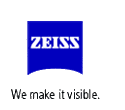SEAL ANALYTICAL | DISCRETE ANALYZER
With over 50 years of
experience in the environmental field, SEAL has designed the Discrete
Analyzer for a modern, highly automated, flexible analyzer in the
environmental laboratory that require high levels of automation, a
wide range of chemistry.
SEAL discrete analyzer continuing the high standard of
reliability and low detection limits has all the advantages of
discrete analysis – auto standard preparation, auto dilution,
automatic method changeover, low reagent consumption – true
automation.
Over 30 Methods for the Environmental Market
USEPA Approval of SEAL Discrete Analyzer Methods and Seal UKAS methods are equivalent to “UK Blue Book”
| PRODUCT | DESCRIPTION |
|---|---|
AQ2 DISCRETE ANALYZER The AQ2+ system Is a flexible analyzer that uses the principle of Discrete Analysis where each test occurs in a separate or discrete reaction vessel. The AQ2 is ideal Features: • The AQ2+ employs a robust robotic sampling arm MARKET :
|
|
AQ1 DISCRETE ANALYZERThe NEW AQ1 Discrete Analyzer... Is a low cost flexible analyzer that uses the principle of Discrete Analysis. Each test occurs in a separate or discrete reaction vessel. The AQ1 is IDEAL ... For laboratories with smaller workloads requiring varied tests on different samples and when individual tests are needed immediately. How does the NEW AQ1 Work?
MARKET :
|








